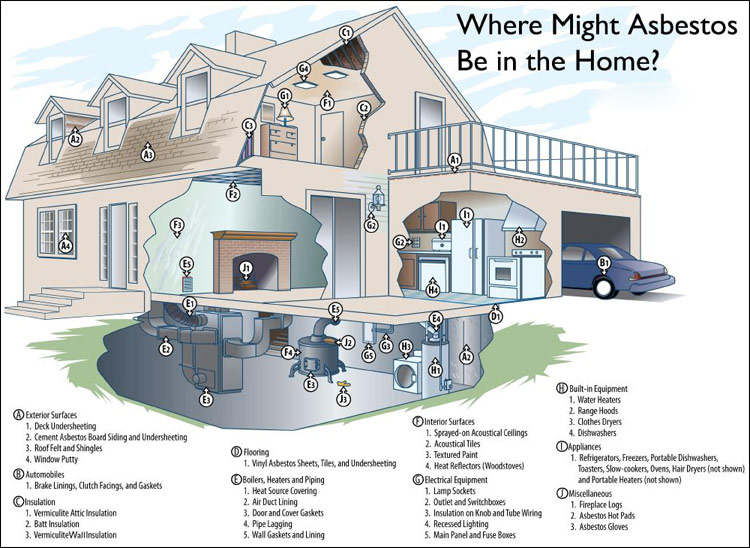Home Renovations and Asbestos: What You Should Know
While remodeling, renovating, or improving your home’s energy efficiency, you should always
take steps to reduce and eliminate pollution as much as possible and protect yourself from
dangerous fumes, materials, and chemicals in the air. Removing asbestos from your home,
however, requires the services of a state-certified professional who is trained to detect, abate,
and remove it. If you live in an older home built prior to the 1980s, before you begin any home
renovation projects, be certain to get your home thoroughly checked for asbestos.
Asbestos Use in Residential Homes
Although products made from asbestos have been phased out since the 1980s, many older
homes in the United States may still contain insulation, vinyl flooring, siding, roofing materials,
appliances, certain types of plaster, and cement which contain asbestos. For many years,
asbestos was used to insulate buildings from temperature and sound. Asbestos was also a
cheap and effective material that could resist fire, chemical reactions, and electrical discharges.
Many home appliances, including water heaters and furnaces, contained asbestos.
Even though asbestos was a reliable way to prevent fires and protect homes, it also has been
linked to harmful diseases, including asbestosis, and the terminal disease, mesothelioma. When
asbestos fibers become airborne, they are easily swallowed. Since these are fibers are so thin
and light, inhalation goes undetected. Once asbestos fibers are ingested, while some may
dispel naturally, it’s impossible to remove them all. Asbestos fibers create havoc on the body’s
organs over time, leading to arrays of health issues.
Detecting Asbestos in Your Home
If you’re unsure if your home has asbestos, it’s nearly impossible to determine by looking for it.
Some products may be labeled as containing asbestos, but most other products are not labeled.
As mentioned earlier, you’ll need a professional asbestos technician in order to determine how
much asbestos you have and where its located. The only exception is vermiculite insulation
that contains asbestos. Vermiculite asbestos insulation is grayish brown with a grainy, wormlike
texture. However, although you can identify if your home contains vermiculite insulation, you’ll
Precautions to Take
Per the Environmental Protection Agency (EPA), treat your older home as if it contains
asbestos at all times if you are unsure. Until you can get confirmation:
● Don’t do any activities at all around areas that may contain asbestos. As mentioned
earlier, this could be appliances such as furnaces and old stoves, siding, shingles, vinyl
flooring, walls, and attics. Children in particular should never be allowed to play near any
area that may contain asbestos.
● Don’t sweep or clean up in areas you think may contain asbestos.
● Don’t load anything into your attic and keep all traffic into the attic as minimal as
possible.
● Never start any home repairs or renovations, regardless of how minor the task may be.
Unfortunately, millions of people are currently dealing with severe disabilities and health
problems after being exposed to asbestos for prolonged periods of time. Construction workers
who built homes prior to the 1980s were constantly working around asbestos-containing
materials without proper protection. In fact, asbestos attorneys have filed many lawsuits against
asbestos manufacturers after these workers developed illnesses that could have otherwise
been prevented with proper warning. Keep in mind, though, there is no reason to fear your
home or move away. Asbestos is usually not harmful unless its disturbed. So while you want to
be cautious until you can get your home inspected, there is no need for panic.
For More Information
For information on how to locate a state-certified asbestos professional, contact your local
health department, and for more detailed information on the effects of asbestos, contact the
Agency for Toxic Substances & Disease Registry (ATSDR) at 800-CDC-INFO.

No comments:
Post a Comment
You are welcome to say what you think. Do drop by again! Thank you!